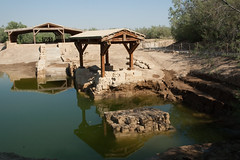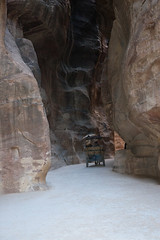
From the beginning, Ida's unveiling has been a master class in ballyhoo. A week ago, the first breathless press releases began to arrive, portending the presentation of the now famous 47-million-year-old primate fossil from Germany: "MEDIA ALERT," the notice shouted in all caps. "WORLD RENOWNED SCIENTISTS REVEAL A REVOLUTIONARY SCIENTIFIC FIND THAT WILL CHANGE EVERYTHING."
The press releases were followed by an international press conference at the American Museum of Natural History in New York City, the publication of a book, The Link: Uncovering Our Earliest Ancestor (Little, Brown), an ABC News exclusive and on May 25 a primetime television special on the History Channel. Of the avalanche of media-related promotion, Jorn Hurum, a Norwegian paleontologist involved in Ida's discovery, told the New York Times, "Any pop band is doing the same thing." (See the top 10 scientific discoveries of 2008.)
This isn't exactly the stamp of approval most scientists look for, though, and in this case the puffery is especially unfortunate because the actual scientific finding, described in a paper published on Tuesday in the online journal PLoS One, really is important. First, the young mammal, which would have looked like a cross between a lemur and a small monkey, is astonishingly complete. "Most of what we understand about primate evolution is pieced together from bits of teeth and jaws," says Michael Novacek, curator of paleontology at the American Museum of Natural History. Ida, by contrast, has pretty much every bone, from the skull to the tip of the tail, and they're all in place. Not only that: You can also see impressions of its fur in the surrounding material, and there are even the remains of what was presumably Ida's final meal (leaves and fruit) still visible where the digestive tract used to be.
The fossil is so perfectly preserved because Ida probably died quickly and nonviolently: Her resting place was an abandoned quarry called the Messel Pit, near Frankfurt. At the time she lived, the pit was a lake out of which poisonous volcanic gases probably belched from time to time. Likely felled by such an outburst, she tumbled into deep, oxygen-poor water where she would have been buried by sediments before she could decompose. Indeed, the Messel Pit is such a rich source of well-preserved fossils that it's been designated a UNESCO World Heritage Site. (Read about China's fossil trade.)
The second reason the discovery is so important is its age. Ida — her scientific name is Darwinius masillae — dates to about 47 million years ago, when temperatures were warmer than they are today and when mammals underwent a burst of evolutionary diversification. In particular, that's when the primates began splitting off into two branches. One became the anthropoids, whose descendants are monkeys, apes and humans. The other turned into prosimians — lemurs and their kin.
Ida is intriguing because she has some characteristics of both branches, which suggests that she could be a transitional animal that gave rise to the prosimians and, ultimately, to us. "How transitional it is," says Novacek, "is a matter of debate and further study. I expected that from the beginning. The ratio of vertebrate paleontologists to actual specimens is high, which makes for a lot of theorizing." A specimen like this will reduce the theorizing, but in the end it may not settle anything at all.
For their part, the authors of the new paper clearly lean toward the idea that Ida is one of our distant ancestors. They don't claim they've proved it, though — in fact, they carefully include a disclaimer that "we are not advocating this here." Even if they were, though, and even if paleontologists all agreed on the matter, Ida could at best be considered a first step on an evolutionary pathway that took another 40 million years to reach the divergence point between chimps and our earliest hominid ancestors.
All of which renders the press release touting a "revolutionary scientific find that will change everything" absolutely true — as long as by "everything," you mean "whether the branch of the primate family that includes monkeys, apes and humans comes from the suborder strepsirrhinae or the suborder haplorrhinae," according to the PLoS One paper. And by "change," you mean "adds information that may or may not help settle the question, but whose implications won't be known for a long time in any case."
Most paleontologists roll their eyes at that sort of overhyped nonsense, especially given that there's real science lurking underneath. After wading through the false advertising, though, most people might have a hard time finding it. source:




















